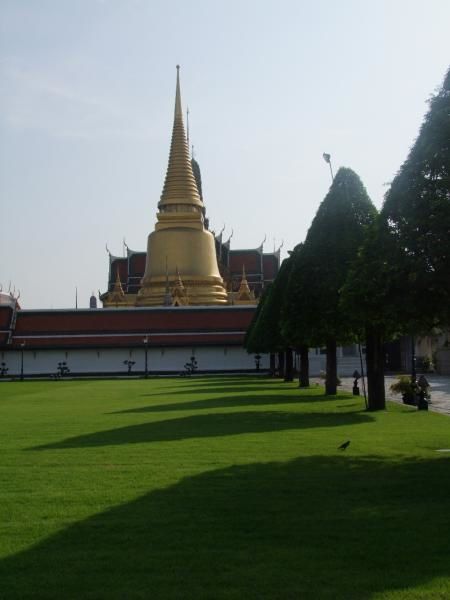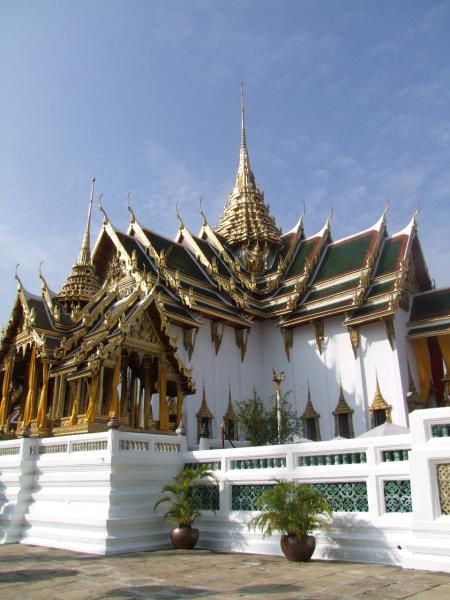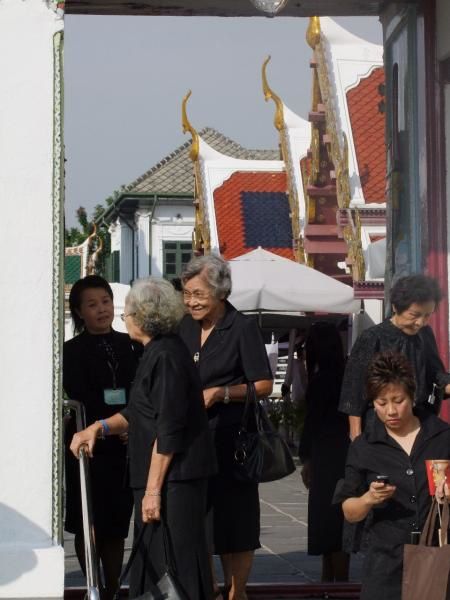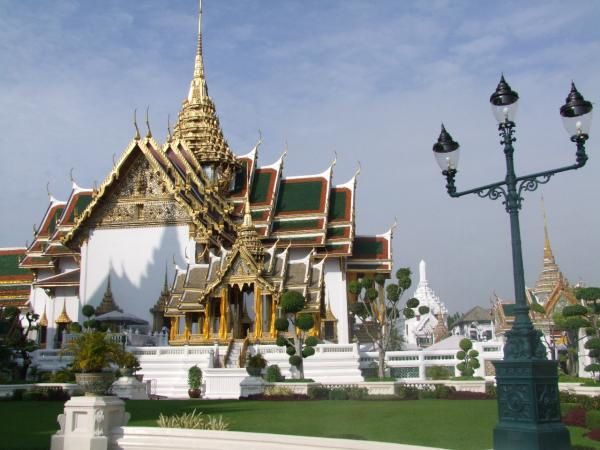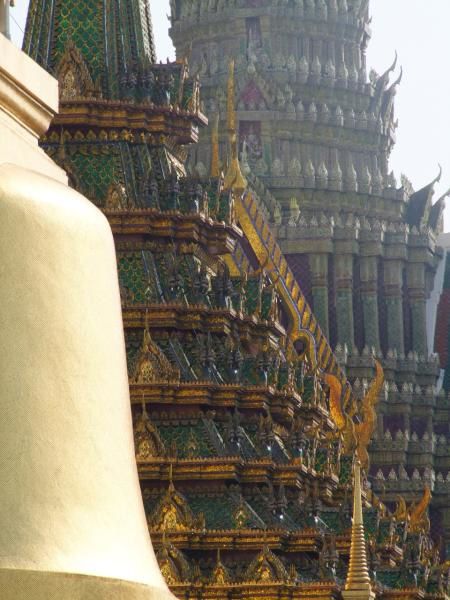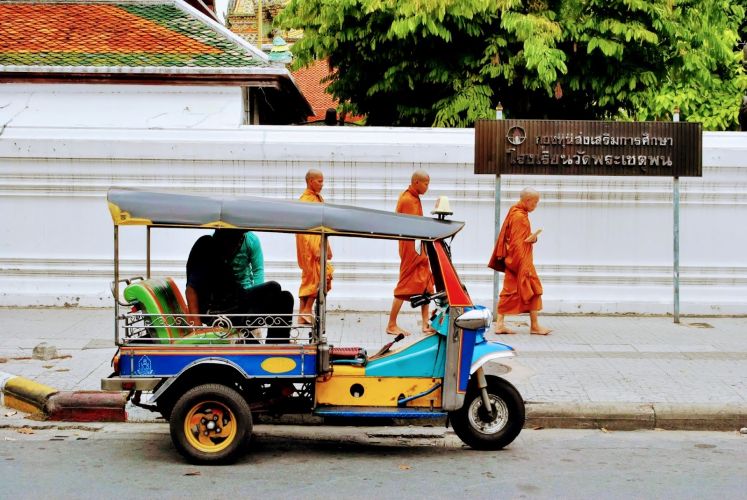January 2 marked the death of Princess Galyani Vadhana (elder sister of the current king, who will celebrate her 81st birthday on December 5th), who died of cancer at the age of 84. It was therefore necessary to wait more than 10 months to attend the cremation of the princess. This is customary in Thailand. The body was embalmed to be preserved. It was necessary to build a crematorium composed of a funeral pyre formed by a 40-meter-high tower.
The ceremony took place over 6 days from November 14 to 19. A minute of silence was requested from the people on Saturday 15 at 22 p.m. More than 5000 soldiers in parade dress participated in accompanying his last journey. On the night of the 15th to the 16th, puppet shows, shadow shows and concerts of classical and traditional music took place.
Royal funeral proceedings
On Sunday morning, November 16, the ashes were collected as well as the remains of the mortal remains which were brought back by two palanquins in procession to the throne room of Dusit Maha Prasat.
On Monday, November 17, a religious ceremony was held in the throne room of Dusit Maha Prasat.
The next day, Tuesday, November 18, still in the throne room of Dusit Maha Prasat, departure of the urn containing the royal ashes to be enshrined in the throne room of Chakri Maha Prasat, which is also part of the Grand Palace.
On Wednesday, November 19, the uncharred remains of the mortal remains were transported for enshrinement at the Rangsi Vadhana Memorial at Wat Ratchabophit in Bangkok.
Princess Galyani holds a special place in the hearts of Thais for her continued commitment and ongoing fight for education and public health. She founded, sponsored and encouraged countless associations. She devoted much energy to education, health, rural and cultural development projects (she had her own foundation to fund the studies of promising musicians).
Perfectly French-speaking, she was elevated on December 25 to the dignity of Grand Officer of the Legion of Honor for her role in promoting the French language in Thailand and for the friendship she has always had for France. Princess Galyani began her career as a French professor at Chulalongkorn University in Bangkok.
After a professional break of about ten years, she took over the French department at Thammasat University in 1969 and later led the Association of French Teachers in Thailand (ATPF, founded in 1977).
For these reasons and because I could see how much Jitima was affected by it (a few tears in front of the touching images of the princess playing on a loop on TV) I accompanied her to Dusit Maha Prasat dressed all in black in order to pay homage to a great lady of this country and of the French-speaking world.
Arrived in front of the Grand Palace, it is opening time, officially open for the Thais, not for the tourists who wait patiently until 8:30 (it was 8:20 when we arrived).
Jitima rushes straight to the entrance while I hear someone shouting at me "only Thai people", the kind of situation that annoys Jitima who doesn't understand this ultra nationalist side that the Thai administration can have (like having to pay 300 bahts to enter the Grand Palace when for a Thai it's free...)
For my part, I did not pay the 300 baht because in this case I did not come to visit but just to pay my respects, and although a guard started to challenge me, Jitima, annoyed (because he was convinced that dressed in black and given where we were going there was no need to justify himself while I had doubts whether I could go straight in like that) was therefore forced to explain that we were just going to Dusit Maha Prasat for the princess.
It's been 2 years since I last set foot here.
For those who want to visit I recommend coming in the morning, besides the milder temperature the light is better.
After waiting our turn on a chair (and beforehand putting my shirt in my pants and buttoning it up to the neck) we enter the building. Photos are obviously prohibited inside, "as a souvenir" you are given a postcard-style photo of the place as you leave, proving in some way your passage here.
We enter, sit in a posture to adopt in front of someone of high rank (legs folded to the side and not simply sitting on the knees) then we must bow, hands joined then both hands touch the ground, and everyone prays, wait a few minutes then we go out to make way for another group.
The Dusit Maha Prasat.
A group of women leaving the temple.
Looking at this grandmother's face, death doesn't seem so dramatic... Buddhism certainly has something to do with it.
We leave the Grand Palais.
And let's go back past the cremation tower before taking
the bus home.



